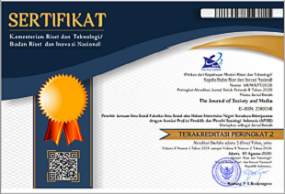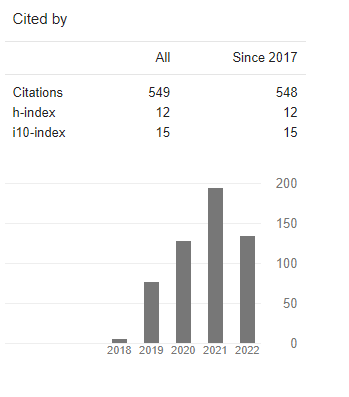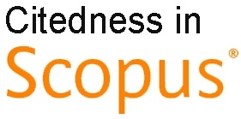The Usage of Social Media and Political Branding of Public Official during Covid-19
DOI:
https://doi.org/10.26740/jsm.v6n2.p286-308Keywords:
social media, Twitter, covid-19, public officialsAbstract
The study examined the use of social media by public officials during the Covid-19 Pandemic, focusing on the Twitter accounts of the Java Province Governor. The accounts were studied as they were associated with four of Indonesia's governors with a high level of activity. The study employed a qualitative method. Data were collected from the given Twitter accounts, which contained pieces related to policies for the handling of the Covid-19 pandemic using the NCapture software. The results of the analysis showed that the four governors seemed to deliberately use social media and Covid-19 issues for various purposes ranging from the use of social media as an instrument of information and communication transparency, an instrument for internal government coordination to an instrument for political branding for 2021 Presidential Election. Based on the result of the analysis of the data obtained from Twitter accounts belonging to the governors of java Province Governor, Jakarta, a conclusion is drawn on account of the use of social media during the Covid-19 pandemic
References
Adinugroho, B., Prisanto, G. F., Irwansyah, I., & Ernungtyas, N. F. (2019). Media
Sosial Dan Internet Dalam Ketelibatan Informasi Politik Dan Pemilihan Umum. Representamen, 5(02).
https://doi.org/10.30996/representamen.v5i02.2943
Basch, C. H., Hillyer, G. C., Meleo-erwin, Z. C., Jaime, C., & Mohlman, J. (2020). Educating the Public about Reducing Exposure to SARS-CoV-2 : Preventive Behaviors Conveyed on YouTube to Mitigate Transmission of COVID-19 Table of Contents. JMIR Public Health and Surveillance.
Belkahla Driss, O., Mellouli, S., & Trabelsi, Z. (2019). From citizens to government policy-makers: Social media data analysis. Government Information
Besman, A., Adiputra, A. V., & Saputra, S. J. (2018). Komunikasi Presiden Joko
https://doi.org/10.20422/jpk.v21i1.518
Bungin, B. (2018). Koomunkasi Politik Pencitraan: The Social Construction of Public Administration (SCoPA) (Riefmanto (ed.); Pertama). Prenadamedia Group.
Gintova, M. (2019). Understanding government social media users: an analysis of interactions on Immigration, Refugees and Citizenship Canada Twitter and Facebook. Government Information Quarterly, December 2018, 101388. https://doi.org/10.1016/j.giq.2019.06.005
Gunawong, P. (2014). Open Government and Social Media: A Focus on Transparency.
Kanka namge, N., Yigitcanlar, T., Goonetilleke, A., & Kamruzzaman, M. (2019). Determining disaster severity through social media analysis: Testing the methodology with South East Queensland Flood tweets. International Journal of Disaster Risk Reduction, October, 101360.
https://doi.org/10.1016/j.ijdrr.2019.101360
Moreno-Ibarra, M., & Torres-Ruiz, M. (2019). Civic participation in smart cities.
In Smart Cities: Issues and Challenges. Elsevier Inc. https://doi.org/10.1016/b978-0-12-816639-0.00003-x
Rahmawati, D. E., & Pratiwi, V. P. (2020). Aktivitas Komunikasi Pemerintah DIY melalui Twitter pada Masa Pandemi Covid-19. In R. Al-Hamdi & M. E.
Samudra Biru.
Rumata, V. M. (2016). Peluang Dan Tantangan Big Data Dalam Penelitian Ilmu
Sandra, L. J. (2013). Political Branding Jokowi Selama Masa Kampanye Pemilu
https://doi.org/10.1177/1609406915624574
Teichmann, L., Nossek, S., Bridgman, A., Loewen, P. J., Owen, T., Ruths, D., & Zhilin, O. (2020). Public Health Communication and Engagement on Social Media during the COVID-19 Pandemic.
Widianti, M. A., Pawito, P., & Hastjarjo, S. (2019). Political Marketing as Arts and
Downloads
Published
How to Cite
Issue
Section
License
Copyright (c) 2022 Silviana Purwanti, Nanang Krisdinanto, Budiman, Rafika Rezky

This work is licensed under a Creative Commons Attribution 4.0 International License.
 Abstract views: 738
,
Abstract views: 738
, PDF Downloads: 911
PDF Downloads: 911












